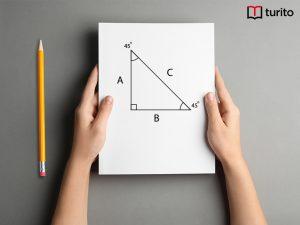Writing an essay demands the writer to put out his thoughts on the given subject with maturity and clarity. He/she needs to weave together all the ideas that are running in his/head at the moment of writing into a unified thread. This task, though challenging, is not impossible to crack.
Let us look at the different stages of essay writing:
Brainstorming
A well-written essay is the result of extensive research. As a result, before writing an essay on a particular topic, we must gather the necessary research material so that the essay we write is authentic, substantial, and convincing. We are likely to produce a subjective, trivial, and prejudiced perspective if we lack proper data and understanding of the relevant details.
Brainstorming is the first step before we start writing in which the ideas that come to our mind on the topic are jotted down, even if they are only tangentially related to your topic. The goal here isn’t to produce a coherent piece of writing; rather, it’s to pave the way for your writing.
Brainstorming is about determining the most effective way to present your information to your intended audience, not just developing a clear topic and set of supporting content to cover. Consider the type of writing you’re doing and for whom you’re writing. It is also very important for us to define the scope of the topic, which has to be clearly comprehended so that our presentation of the topic does not go all over the place.
Making an outline
An essay’s outline refers to its skeletal structure. At this point, you’re organizing all of the ideas, connections, and conclusions that came up during your brainstorming session into an outline.It contains our essay’s main and sub-points. An outline is always useful because it keeps us focused and systematic as we tackle the various issues in an essay. A good outline allows us to express ourselves in a logical manner. We can certainly avoid the danger of writing something redundant and missing out on an important aspect related to the issue if we have selected or rejected certain ideas at the stage of preparing an outline.
This is also the stage at which you define the tone of your work. Usually, determining the appropriate tone for your writing is simple—if it’s an essay or another piece of academic writing, it requires a formal tone. If you’re writing a promotional piece, your tone should be engaging and emphasize the benefits of whatever you’re promoting. When you’re not sure what tone to use or how to achieve it, do an internet search for examples of the type of writing you’re doing and become familiar with the structure, vocabulary, and overall tones used.
These two stages, brainstorming and making the outline are referred to as the pre-writing process.
Writing the first draft
Finally, we are ready to do some actual writing.
Since an essay is such a detailed composition, it is usually best written after revision and editing. As a result, it is frequently observed that essays submitted after revision and editing are far superior to those submitted without these. However, in competitive exams, we won’t be able to complete the draft and provide the final version after revision. Even so, it is always useful to jot down the order in which we intend to take up the various ideas that will form the fulcrum of our essay. It will be impossible to maintain coherence and unity in the ideas expressed unless we have the main points in mind or in front of us.
Here’s a fact that many writers are unaware of: you don’t have to write your rough draft from beginning to end. If you know exactly what you want to say in your third supporting paragraph but aren’t sure how to hook readers in your intro, write that third supporting paragraph first and then return to the intro. When you reach a difficult point in your writing, it’s easy to become stuck and waste a lot of time trying to figure out what to write next. Save time and stress by writing the easiest parts first, then moving on to the more difficult parts.As a result, if not the entire first draft, it is well worth preparing a brief rough sketch before diving into the actual process of writing an essay.
Revising and editing
Allow your work to “cool off” before editing. In other words, unless you’re pressed for time and absolutely must, don’t jump from writing the first draught to editing it. You can get some distance from your work by taking a break between writing and editing. This allows you to look at it with “fresh eyes,” allowing you to spot mistakes and areas for improvement more easily than you would if you hadn’t created that distance.
It is critical to re-read the first draught before submitting the essays for final consideration. We must pay close attention while revising our essay to ensure that the logical development of the idea is maintained throughout our effort. The natural evolution of a thesis, in addition to the content and style, is what makes an essay eminently readable. As a result, we must ruthlessly edit essays, looking for logical inconsistencies that may exist. While reshaping the matter, a great deal of revision occurs. While editing an essay, any lopsided views and subjective ideas must be trimmed down to ensure that it is free of affectations, exaggerations, and prejudices.Remember that any ambiguity in style or substance is likely to diminish the overall impact of the presentation, so it must be side-stepped at all costs.
Given below is a sample of a well-researched essay on the topic, “The Importance of Sports in our Lives”.
The Importance of Sports in our Lives
The subject of sports is extremely broad. It can be used as a form of therapy and a tool in various aspects of life to help change the world. Sports allow children to exercise, develop physical skills, work as part of a team, and boost their self-esteem. It also plays an important role in advancing education and knowledge.
Playing sports entails regular exercise, such as jogging, going to a fitness center, or participating in any game. Sports activities include a variety of games. Every game has its own set of rules. Individuals or teams participate in these sports activities for recreation, entertainment, and competition. Sporting improves the physiological functions of the body organs as well as the overall functionality of the body system. Sports teach us various skills such as leadership, patience, coordination, motivation, and teamwork.
Sport is also very important in character development. For some, it is more than just a physical movement or a game strategy; it is a life philosophy. A positive attitude towards sports is becoming more popular in today’s world. Young people strive to appear athletic, fit, and energized. In the past, a career in sports was thought to be less lucrative in many countries. However, it is now one of the most lucrative professional options for students. Students may become interested in sports for the sake of adventure and a stress-free lifestyle. At the international level, various sports competitions, such as the Olympics, are held. Aside from that, numerous matches and inter-city competitions are held to promote the field of sports.
Nowadays, we can see issues associated with unhealthy lifestyles. We’re spending more and more time on the couch, surrounded by gadgets. We underestimate the value and importance of sports and physical activities. Obesity and other health problems, such as heart diseases are caused by a lack of physical activity in our bodies. It has become a requirement in today’s world for all of us to engage in daily physical activities or sports for at least 30 minutes.
A sport is an extremely important aspect of human life. It unquestionably improves the quality of human life. Sports should be made compulsory in schools. This is due to the fact that it is just as important as education. Sport lays the groundwork for healthy individuals, developing their abilities and personalities in the process of developing a well-developed and resilient nation.
Related topics
Exploring the World of Adjectives: Types, Usage, and Examples
What are Parts of Speech? Parts of speech determine words’ grammatical and semantic position in a sentence. Activity time The parts of speech are nouns, adverbs, conjunctions, pronouns, interjections, adjectives, articles, prepositions, and verbs. Identify the parts of speech of the underlined words in the following sentences. White- Adjective Big- Adjective Exciting- Adjectives New- […]
Read More >>Memoir Writing: Basic Elements, Structures, and Types
Memoir: A memoir is a narrative written from an author’s perspective about a particular facet of his/her own life. ‘Memoir’ word comes from the French word ‘memoire’, which means ‘memory’ or ‘reminiscence’. Example Night: Elie Wiesel gives an account of how he survived his teenage years at Auschwitz and Buchenwald concentration camps during World War […]
Read More >>Identification of Main Idea in Fiction and Non-fiction
Every story or paragraph or non-fictional text has at least one main idea. The MAIN IDEA is what the text is mostly about. (It is backed up or supported by SUPPORTING DETAILS) Before discussing how to find the main idea, we shall first look at TOPIC. Can you define a topic? A topic can be […]
Read More >>Writing an Article: Structure and Essential Tips
What is an article? Structure of Article Writing : Title : Draw the attention of readers with an attractive title and indicate the main topic of the article Introduction : Attract the reader’s attention with a sentence that gives a general presentation of the topic. Main Body : Between these sentences, the body should do […]
Read More >>Other topics











Comments: